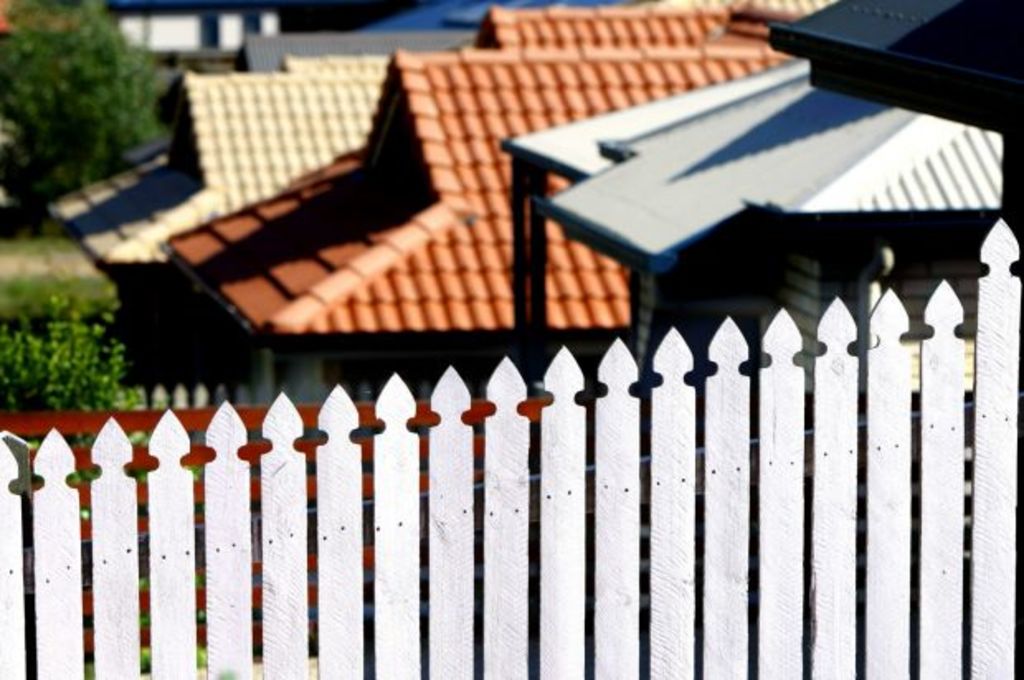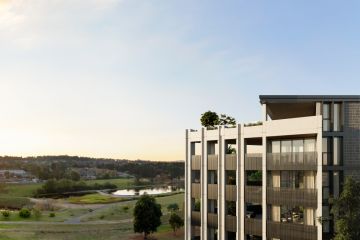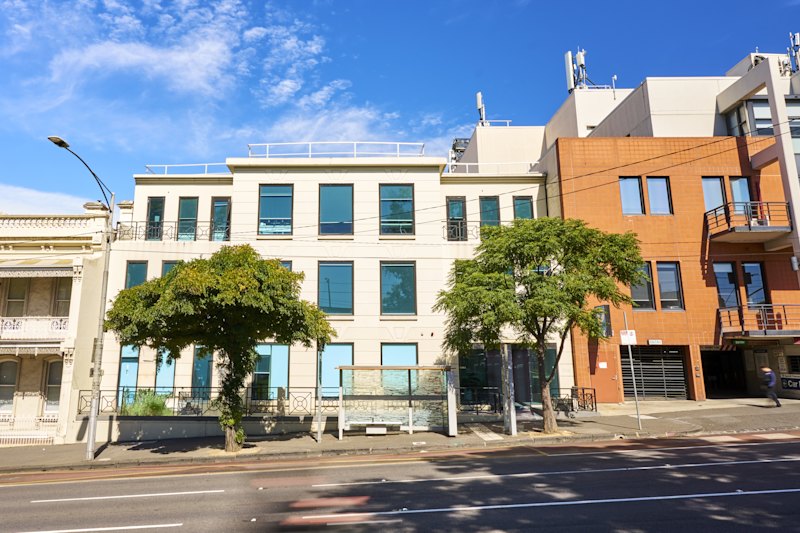Census 2016: The Australian cities where home ownership declined the most

The nationwide home ownership rate dropped 1.5 per cent to 65.5 per cent between 2011 and 2016, but there were notable differences from city to city.
In our most populated capitals home ownership is declining at twice the rate of the national average, creating a “big worry” for policymakers, Grattan Institute fellow Brendan Coates said.
“Home ownership rates have fallen in [Melbourne and Sydney] by 3 per cent, more than double the pace of the decline seen nationwide,” he said.
And this trend went “hand in hand” with the increase in renting households. The proportion of Melbourne and Sydney renters jumped about 5 per cent in a decade.
Tenants across most of the country face increased housing stress, defined as paying more than 30 per cent of the household income on rent.
But the statistics tended to reflect the opposite for mortgaged home owners, who were finding it easier than ever to make repayments on their homes.
Mr Coates said this was due to interest rates dropping from 4.5 per cent to 1.5 per cent between censuses and was “masking” the difficulties home owners would face in the event of a rate hike.
On his calculations, a rise of 2 percentage points in interest rates will see mortgage payments on a new home cost more of a household income than “at any time in the past two decades”.
- Related: Renters grow as Great Australian Dream fades
- Related: Census 2016: Melbourne set to overtake Sydney
- Related: Census 2016: Australia more Asian than European
The other big shift among most capital cities – predominantly Sydney and Melbourne but “to an extent” Brisbane – was the rise of apartment living, Chris Johnson, chief executive of developer lobby Urban Taskforce, said.
“These results were from 18 months ago and there’s no doubt in my mind the trends are going to continue,” Mr Johnson said.
“There’s a trend towards renting, which comes with the apartment market, but it’s also to do with global cities as well,” he said.
“As cities like Sydney and Melbourne increase their populations over the next 40 years both will become cities of eight million people. This is the same size as the current populations of London and New York so we must plan for this type of city in the future.”
Greater Sydney
 Almost one in three homes in Sydney is now an apartment. Photo: Kirk Gilmour
Almost one in three homes in Sydney is now an apartment. Photo: Kirk Gilmour
The proportion of tenants in Sydney increased from 31.6 per cent in 2011 to 34.1 per cent in 2016, making them the most dominant group in the city. Home owners with a mortgage declined from 34.8 per cent to 33.2 per cent. And even fewer Sydneysiders owned their home outright – down to 29.1 per cent, compared to 30.4 per cent in 2011.
This could explain the increase in group households, from 4.3 per cent to 4.7 per cent, and single person households, from 21.6 per cent to 22.6 per cent. Family households declined from 73.6 per cent to 73.1 per cent, but remained the dominant group.
More tenants are in housing stress in 2016 than 2011, with 14.2 per cent citing they spent more than 30 per cent of their household’s income on rent last year, compared to 12.6 per cent in the previous census.
The median rent increased substantially, from $351 to $440 a week.
On the other hand, mortgaged home owners fared well: the proportion who spent more than one-third of their income on mortgage repayments declined from 12 per cent to 8.4 per cent over the same period.
The median mortgage repayment remained at the same level, $2167, despite property prices rising.
The other big housing shift picked up in the census is a result of the building boom. Almost one in three homes in Sydney is an apartment – 28.1 per cent – compared to 25.8 per cent in 2011.
Detached houses held onto their spot as the most dominant housing type: 56.9 per cent in 2016, compared to 60.9 per cent in 2011.
Sydney’s much-debated “missing middle” of terraces and medium-density housing also showed a slight increase, up to 14 per cent compared to 12.8 per cent in 2011. — Jennifer Duke
Greater Melbourne
 The median rent in Melbourne has jumped from $300 to $350 a week over five years. Photo: Vince Caligiuri
The median rent in Melbourne has jumped from $300 to $350 a week over five years. Photo: Vince Caligiuri
Soaring house prices were tipped to put immense pressure on the city’s rental market, and the proportion of Melbourne’s renters increased from 27.2 per cent in 2011 to 30 per cent in 2016.
The median rent jumped from $300 to $350 a week, and the proportion of households with rent payments of 30 per cent or more of their income increased from 9.7 per cent to 11 per cent.
Despite rising prices, the proportion of households paying 30 per cent or more of their income on mortgage repayments fell from 11 per cent to 8.1 per cent since the last census. The median mortgage repayments also fell from $1810 to $1800 a month.
Compared to 32.7 per cent of households that owned their property outright in 2011, only 30.4 per cent have paid off their mortgage in 2016.
Though there has been a surge of construction activity across Greater Melbourne, more people are now living under one roof. The average number of persons per household increased from 2.6 to 2.7. The proportion of unoccupied private dwellings jumped from 9 per cent to 9.6 per cent in 2016.
The record number of building approvals appears to be still under construction or in the pipeline, with the proportion of apartments and flats recording a surprising fall from 15.3 per cent to 14.7 per cent over the past five years.
The strongest growth have been in medium-density housing: semi-detached, townhouses and row and terrace houses have jumped from 11.6 per cent to 16.8 per cent. The proportion of separate houses dropped from 72.6 per cent to 67.8 per cent. — Christina Zhou
Greater Brisbane
 More than 20 per cent of Brisbane residents now live in an apartment. Photo: Michelle Smith.
More than 20 per cent of Brisbane residents now live in an apartment. Photo: Michelle Smith.
Brisbane residents with a mortgage are less stressed than they were in 2011.
Back then, the census showed 8.7 per cent of households in the Brisbane local government area spent more than 30 per cent of their household’s income on mortgage repayments. By 2016, that figure fell significantly, to 5.8 per cent.
And here’s why: over the course of five years, the median monthly mortgage repayment in Brisbane fell from $2100 to $2000. The drop in mortgage repayments can be put down largely to interest rates cuts, from 4.5 per cent to 1.5 per cent between censuses – but also to Brisbane’s property market, which has seen only modest gains during that time.
The proportion of Brisbane households with a mortgage dropped from 36.8 per cent to 35.7 per cent, while the number of those renting increased from 35.7 per cent to 36.9 per cent. The proportion of households who own their home outright decreased slightly from 27.7 per cent to 26.5 per cent.
Brisbane’s apartment building boom is reflected in the data, which shows the number of residents living in houses declining by nearly three per cent since 2011 and the number of those living in units or apartments increasing by about the same amount.
More than 20 per cent of Brisbane residents now live in an apartment but that doesn’t mean our households are necessarily getting smaller – the data also showed single households have decreased slightly and family households have increased. — Ellen Lutton
Greater Canberra
 The number of Canberrans in mortgage stress has dropped, and there has only been a 0.1 per cent increase in rental stress. Photo: Sitthixay Ditthavong Photo: Sitthixay Ditthavong
The number of Canberrans in mortgage stress has dropped, and there has only been a 0.1 per cent increase in rental stress. Photo: Sitthixay Ditthavong Photo: Sitthixay Ditthavong
The number of residents renting in Greater Canberra has also jumped, with almost a third of ACT homes now leased.
While the proportion of homes owned outright fell from 28.4 per cent to 27 per cent, and the number of homes owned with a mortgage dropped from 38.9 per cent to 38.4 per cent, rented homes increased by 1.2 per cent to 31.8 per cent.
With the median weekly rent remaining stable over the five year period, at $380 a week, rental stress only lifted 0.1 per cent to 8.1.
Meanwhile, the number of Canberrans in mortgage stress dropped from 7.8 per cent to 5.5 per cent, as the city’s median monthly mortgage repayments dropped by more than $100 from $2167 to $2058.
The proportion of occupied semi-detatched houses and units have jumped by about 3 per cent and 2.5 per cent respectively over the same period.
Now, 33 per cent of Canberrans are living in townhouses or units. – Emma Kelly
Greater Perth
 There’s been a drop in the percentage of apartments in Perth. Photo: Daniel Carson
There’s been a drop in the percentage of apartments in Perth. Photo: Daniel Carson
Fewer homes are rented or owned outright and more homeowners have a mortgage than five years ago.
Mortgage stress has decreased since 2011 – 9.3 per cent of Perth residents pay more than 30 per cent of the household income in 2016 compared with 11 per cent in 2011. This is still higher than the national average, which dropped from 9.9 per cent to 7.2 per cent in five years.
Rent stress has increased from 9.2 per cent in 2011 to 9.9 per cent, in line with the national upward shift from 10.4 per cent to 11.5 per cent.
Perth’s average mortgage repayment of $2000 per month is unchanged since 2011, but remains higher than the Australian average of $1755.
The number of semi-detached houses has increased markedly from 11.9 per cent to 16 per cent, countering drops in the number of houses – 78.6 per cent to 76.9 per cent – and apartments (9.1 per cent to 6.6 per cent).
Ownership has remained stable: houses owned outright now comprise 23 per cent, compared with 23.6 per cent; 41.9 per cent are owned with a mortgage, compared with 39.8 per cent in 2011, and 26.7 per cent are rented, down slightly from 27.6 per cent five years ago.
Despite fewer homes now being rented, the city’s median rents have increased from $320 to $360.
The composition of Perth households in 2016 is largely unchanged since 2011. Family households comprise 73 per cent, compared with 72.1 per cent in 2011; single-person households make up 23 per cent (23.6 per cent in 2011) and group households have dropped from 4.3 per cent to 4 per cent. — Rebecca Holland
Greater Adelaide
 More than 10 per cent of people in Adelaide are in rental stress. Photo: Supplied.
More than 10 per cent of people in Adelaide are in rental stress. Photo: Supplied.
Echoing other Australian cities, Greater Adelaide saw an increase in renters, with 28.9 per cent of homes rented in 2016, compared to 28.1 per cent in 2011.
However owners with a mortgage remain the dominant group. 36.5 per cent of respondents were paying off their home in 2016, slightly above the 36.4 per cent in 2011. Meanwhile 30.7 per cent owned their properties outright, down on the 31.5 per cent that did in 2011.
With median monthly monthly mortgage repayments falling from $1,545 to $1,517, mortgage stress decreased from 9.4 per cent in 2011 to 7 per cent in 2016.
It’s a different story for tenants, with a median rent rise from $250 a week to $285 a week, resulting in rental stress jumping from 9.9 per cent in 2011 to 10.9 per cent in 2016.
The city has seen a shift towards medium density, with 16.9% of occupied homes falling into that category, up from 12.1% in 2011. The proportion of apartments, on the other hand, has decreased – 7.8 per cent in 2016, down from 10.4% in 2011. Freestanding houses still made up the majority of homes, despite falling from 77.2 per cent in 2011, to 74.8 per cent. – Nicole Frost
We recommend
We thought you might like
States
Capital Cities
Capital Cities - Rentals
Popular Areas
Allhomes
More







